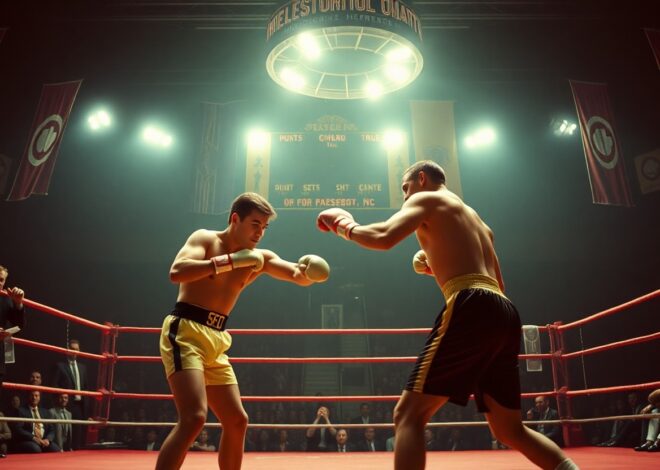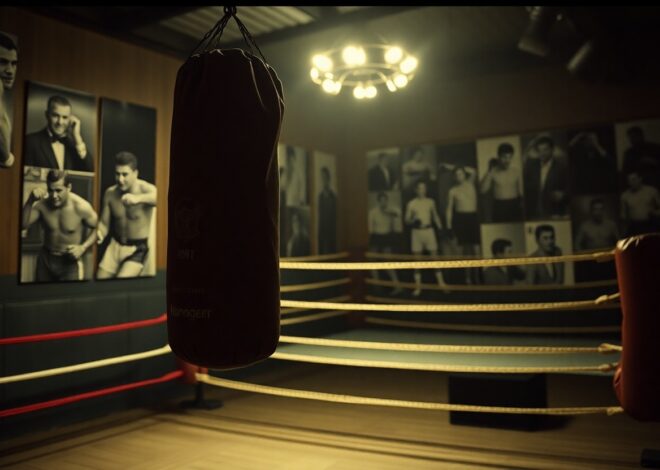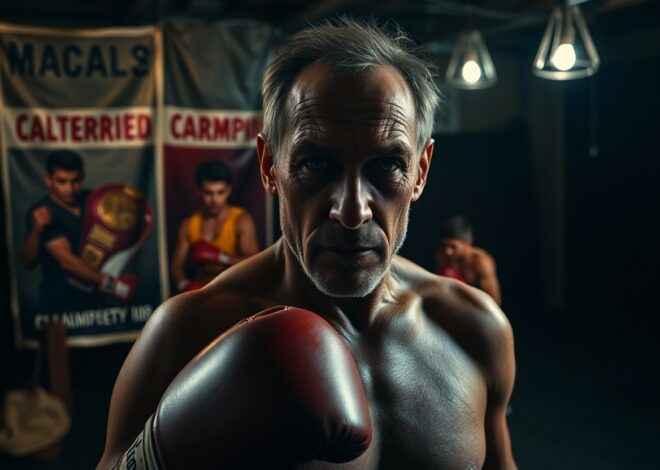The Most Iconic Knockouts in Boxing History
Most boxing fans can instantly recall the electrifying moments when legendary fighters delivered knockouts that transcended the sport itself. These devastating finishes didn’t just end fights—they created immortal moments that defined careers and captivated audiences worldwide. From lightning-fast combinations to single devastating punches, you’ll discover how these knockouts became cultural phenomena that still generate excitement decades later. Whether you’re a seasoned boxing enthusiast or new to the sport, understanding these historic moments gives you insight into the raw power, precision, and drama that makes boxing one of the world’s most compelling sports.
Defining Greatness: Measuring a Knockout’s Impact
You can’t simply judge a knockout by its visual spectacle alone—true greatness emerges from a complex interplay of timing, circumstances, and lasting influence on the sport. The most iconic knockouts transcend mere athletic achievement, becoming cultural touchstones that define careers and reshape boxing’s narrative. Consider how Roberto Duran’s shocking surrender against Sugar Ray Leonard in 1980 carried more weight than many spectacular finishes, or how Buster Douglas’s upset of Mike Tyson created a seismic shift in heavyweight boxing that reverberates today. Your understanding of knockout greatness must encompass not just the physical destruction, but the psychological warfare, career implications, and historical significance that elevate certain moments above others.
Historical Context of Knockouts
Boxing’s knockout landscape has evolved dramatically across different eras, with each period reflecting the sport’s changing dynamics and fighter development. The bare-knuckle era produced marathon battles where knockouts often came from exhaustion rather than single devastating blows. The golden age of the 1920s-1940s saw technical precision dominate, while the television era demanded more explosive finishes to captivate audiences. You’ll notice how modern boxing’s emphasis on defensive techniques and protective equipment has actually decreased knockout rates, making today’s spectacular finishes even more remarkable. Each era’s knockouts tell the story of boxing’s evolution, from John L. Sullivan’s raw power to Floyd Mayweather’s calculated precision.
Statistical Analysis of Knockout Rates
Knockout rates have declined significantly over the past five decades, dropping from approximately 35% in the 1970s to just 22% in modern professional boxing. You’re witnessing this trend across all weight classes, though heavyweights still maintain the highest knockout percentage at around 40%, while lighter divisions like flyweight hover near 15%. The average knockout occurs in round 4.2 of professional fights, with the highest frequency between rounds 3-6 when accumulated damage peaks but fighters retain enough power for decisive blows.
Several factors contribute to these declining knockout statistics that you should understand. Enhanced training methods now emphasize defensive positioning and damage mitigation, while improved medical oversight and referee intervention prevent fighters from absorbing excessive punishment. Modern gloves and protective equipment, though designed for safety, actually allow fighters to throw harder punches with less risk of hand injury, creating a paradoxical effect where potential knockout power increases but defensive awareness simultaneously improves. Additionally, today’s fighters benefit from advanced nutrition and conditioning programs that build superior chin durability and recovery capacity. The sport’s increased emphasis on technical boxing over slugging has produced more tactical battles, where fighters prioritize point accumulation over seeking the dramatic finish that defined earlier generations.
Legendary Moments: The Most Memorable Knockouts
Boxing history holds moments that transcend sport itself, creating cultural touchstones that resonate decades later. These legendary knockouts didn’t just end fights—they defined eras, shifted global narratives, and demonstrated boxing’s unique power to capture the world’s attention. You witness history when technique meets timing in perfect, devastating harmony, creating spectacles that amateur and professional observers alike discuss for generations.
Joe Louis vs. Max Schmeling: A Fight that Crossed Boundaries
Your understanding of boxing’s cultural impact becomes clear when examining Louis’s first-round demolition of Schmeling on June 22, 1938. The Brown Bomber unleashed a calculated fury that dropped the German fighter three times in 124 seconds, avenging his 1936 defeat while carrying the hopes of a nation on the brink of war. Two million African Americans gathered around radios as Louis’s combinations shattered more than Schmeling’s defense—they broke through racial barriers and Nazi propaganda simultaneously.
Muhammad Ali vs. George Foreman: The Rumble in the Jungle
Kinshasa witnessed boxing’s greatest upset when Ali’s eighth-round knockout of the seemingly invincible Foreman shocked 60,000 spectators and millions watching worldwide. Your expectations would have favored the younger, stronger champion who had demolished Frazier and Norton. Instead, Ali’s rope-a-dope strategy exhausted Foreman before a perfectly timed combination sent the heavyweight champion crashing to the canvas, unable to beat Don King’s ten-count despite struggling to his feet.
The tactical brilliance of Ali’s performance reveals itself through careful analysis of his unconventional approach. You observe a 32-year-old fighter absorbing tremendous punishment for seven rounds, allowing Foreman to tire himself against the ropes while Ali whispered psychological warfare into his opponent’s ear. The knockout sequence—a straight right followed by a chopping left hook—came as Foreman lunged forward off-balance, demonstrating how Ali’s ring intelligence compensated for diminished physical abilities. This victory restored Ali’s claim as the greatest heavyweight of all time and proved that boxing IQ could overcome raw power.
Mike Tyson vs. Trevor Berbick: An Era of Dominance
Your witnessing of boxing history occurred on November 22, 1986, when 20-year-old Tyson became the youngest heavyweight champion ever by demolishing Berbick in the second round. The future “Baddest Man on the Planet” unleashed a left hook that sent Berbick stumbling across the ring in three different directions, unable to regain his balance. Referee Mills Lane stopped the fight as Berbick struggled helplessly, marking the beginning of Tyson’s reign of terror that would dominate boxing’s landscape.
Tyson’s ascension represented a seismic shift in heavyweight boxing, combining Cus D’Amato’s peek-a-boo style with unprecedented ferocity and speed. You could see the culmination of years of training in that devastating left hook—a weapon honed through countless hours of pad work and sparring sessions that generated tremendous torque from Tyson’s compact frame. The knockout’s significance extended beyond the title change, as it announced the arrival of a fighter who would capture mainstream attention like no boxer since Ali, bringing pay-per-view audiences and celebrity fascination back to the heavyweight division during the late 1980s.
The Art of the Knockout: Techniques that Changed the Game
You witness boxing’s evolution through the knockout techniques that have redefined the sport’s landscape. Legendary fighters didn’t just rely on raw power – they mastered specific combinations of footwork, timing, and precision that created moments of pure boxing artistry. From Joe Louis’s devastating right cross to Mike Tyson’s explosive uppercuts, each iconic knockout represents years of technical refinement distilled into a single, perfect moment. These techniques became blueprints that future generations would study, adapt, and perfect, transforming boxing from mere brawling into a sophisticated combat science.
The Science of Timing and Precision
Your understanding of knockout power goes beyond brute force when you examine the biomechanics behind legendary finishes. Sugar Ray Robinson’s knockout of Gene Fullmer demonstrated perfect kinetic chain alignment – his left hook generated maximum force by coordinating hip rotation, shoulder turn, and wrist snap in a millisecond sequence. Muhammad Ali’s phantom punch against Sonny Liston, though controversial, showcased how precise timing can amplify minimal force into maximum impact. Modern analysis reveals that knockout punches often land when opponents are shifting weight or mid-breath, creating vulnerability windows lasting mere fractions of a second.
Iconic Punches that Led to Legendary Knockouts
You can trace boxing’s most devastating moments to specific punch variations that became signature weapons. Joe Frazier’s left hook earned the nickname “the hammer of Thor” for its devastating arc and timing, while Roberto Durán’s body shots demonstrated how systematic punishment could crumble even the toughest opponents. Thomas Hearns’s straight right hand traveled like a piston, earning him 32 knockouts and the moniker “Hit Man.” Each fighter’s signature punch reflected their unique physical attributes and fighting philosophy, creating a diverse arsenal of knockout techniques.
These signature punches didn’t emerge overnight – they represented thousands of hours of refinement and adaptation to each fighter’s natural strengths. Frazier’s devastating left hook compensated for his shorter reach by creating angles that taller opponents couldn’t defend, while his relentless pressure forced them into the punch’s path. Hearns utilized his exceptional 78-inch reach to land his straight right from distances that seemed safe to opponents, often catching them as they moved forward. Durán’s body attack strategy involved systematic targeting of the liver and solar plexus, weakening opponents’ legs and breathing before delivering the finishing blow. You see how these fighters transformed their physical limitations into tactical advantages, creating knockout techniques that perfectly matched their fighting styles and became their calling cards in boxing history.
Cultural Resonance: How Knockouts Shape Boxing’s Legacy
Boxing’s most devastating knockouts transcend the ring to become defining moments that shape entire generations of fight fans. You witness how a single punch can crystallize decades of anticipation, as seen when Buster Douglas floored Mike Tyson in Tokyo, forever altering boxing’s landscape. These moments embed themselves in collective memory, creating reference points that fans use to measure greatness. Douglas’s upset generated 42-to-1 odds defiance that still resonates today, proving how knockouts become cultural touchstones that define eras and establish legacies far beyond their immediate impact.
The Role of Knockouts in Fandom and Pop Culture
Spectacular knockouts fuel boxing’s mainstream appeal, transforming casual observers into lifelong fans through single moments of drama. You see this phenomenon when Ali’s phantom punch against Liston sparked decades of debate, creating conspiracy theories and documentaries that keep the moment alive in popular culture. These knockouts become viral content before social media existed, spreading through highlight reels, movie references, and water cooler conversations. Rocky Balboa’s fictional knockouts mirror real moments that captivated audiences, demonstrating how boxing’s most dramatic finishes inspire entertainment and artistic expression across multiple mediums.
Knockouts as Political and Social Statements in Boxing
Boxing’s biggest knockouts often carry weight beyond sport, serving as symbols of broader social movements and political tensions. You observe this when Joe Louis knocked out Max Schmeling in 1938, delivering what many Americans viewed as democracy’s victory over fascism in just 124 seconds. Similarly, when Muhammad Ali returned from his Vietnam War exile to reclaim heavyweight supremacy, his knockouts represented defiance against establishment authority and racial oppression.
These politically charged moments demonstrate boxing’s unique position as a platform for social commentary. Louis’s rematch victory generated nationwide celebrations in Black communities while serving as propaganda for American values during rising global tensions. The fight drew an estimated 70 million radio listeners, making it one of the most significant sporting events in American history. Your understanding of these knockouts requires recognizing their context within Jim Crow America, where Black athletes carried the hopes and frustrations of entire communities. Similarly, Ali’s controversial stances transformed his later knockouts into statements about religious freedom, conscientious objection, and Black pride during the Civil Rights era.
Insights from the Ring: Perspectives from Champions
Behind every legendary knockout lies a story of preparation, timing, and split-second decision-making that only those who’ve experienced it can truly understand. Champions and their trainers offer unique perspectives on what separates a good punch from a career-defining moment that echoes through boxing history. You’ll discover that the most devastating knockouts aren’t just about raw power—they’re the result of calculated strategy, mental preparation, and years of technical refinement that culminate in those unforgettable moments when everything aligns perfectly.
Boxers Reflect on Their Greatest Knockouts
Mike Tyson once described his knockout of Trevor Berbick as feeling like “time slowed down” when he saw the opening for his devastating left hook. Many champions echo this sentiment, explaining how their greatest knockouts felt almost inevitable once they recognized their opponent’s pattern. Sugar Ray Robinson noted that his knockout of Gene Fullmer came after studying film for weeks, waiting for the precise moment when Fullmer would drop his guard. You’ll find that legendary fighters often describe their most famous knockouts not as lucky punches, but as the culmination of careful observation and patient execution.
Trainers’ Strategies for Achieving Knockouts
Angelo Dundee, who trained Muhammad Ali, emphasized that knockout power comes from perfect timing rather than brute force. His approach involved drilling specific combinations until they became instinctive, allowing fighters to capitalize on split-second opportunities. Cus D’Amato developed Tyson’s peek-a-boo style specifically to create knockout angles, teaching him to slip punches while positioning for devastating counters. You’ll notice that elite trainers focus on creating systematic approaches to finding knockout opportunities rather than relying on natural power alone.
The most successful knockout strategies involve layered psychological and physical preparation that extends far beyond the gym. Freddie Roach’s work with Manny Pacquiao demonstrates how trainers analyze opponents’ defensive habits frame by frame, identifying micro-patterns that reveal knockout opportunities. Roach would spend hours studying how opponents reacted to specific punch combinations, then design training sequences that programmed Pacquiao’s muscle memory to recognize and exploit these weaknesses. Emanuel Steward’s approach with Thomas Hearns involved creating “knockout maps”—detailed breakdowns of opponents’ vulnerable moments during different phases of rounds. You can see this methodology in Hearns’ perfectly timed knockout of Roberto Duran, where Steward had identified that Duran consistently dropped his right hand when throwing body shots in the second minute of rounds. Modern trainers like Virgil Hunter take this further, using biometric data to identify when opponents’ reaction times slow, typically occurring at the 1:45 mark of intense rounds when lactic acid buildup affects muscle response by 12-15%.
To wrap up
Now you’ve explored some of boxing’s most legendary knockout moments that have shaped the sport’s rich history. These spectacular finishes demonstrate the raw power, precision, and drama that make boxing captivating for millions worldwide. From Ali’s phantom punch to Tyson’s devastating uppercuts, each knockout tells a unique story of skill meeting opportunity at the perfect moment. As you continue following boxing, you’ll witness how these historic moments continue influencing modern fighters and inspiring new generations of athletes who strive to create their own unforgettable knockout legacy in the ring.



